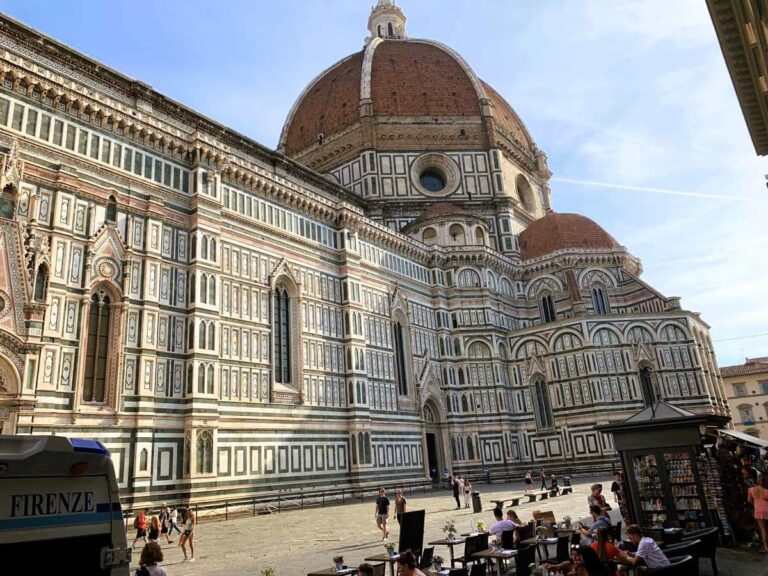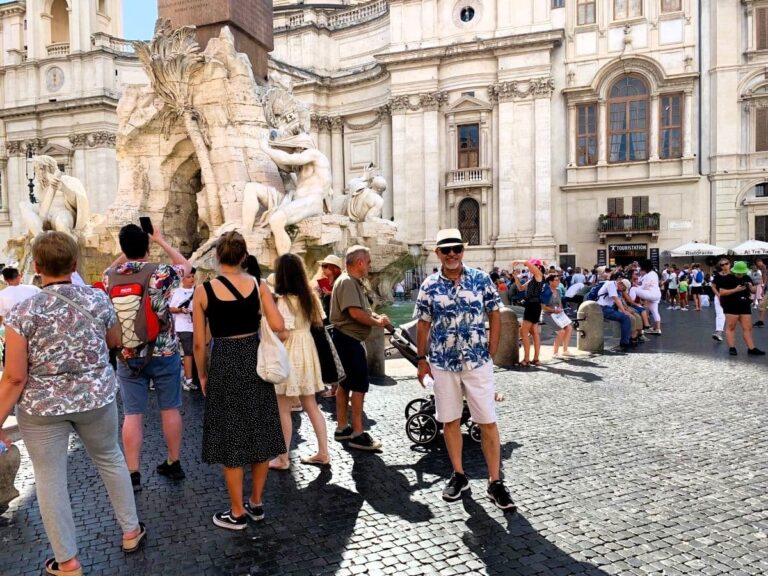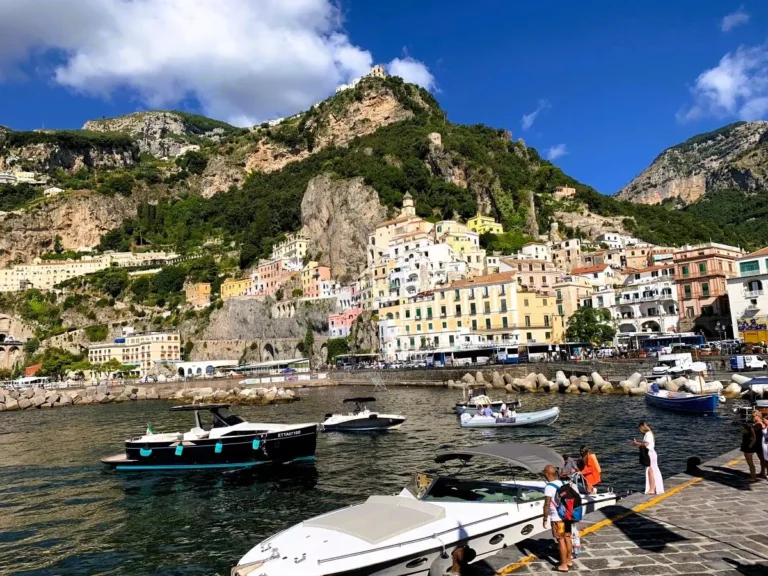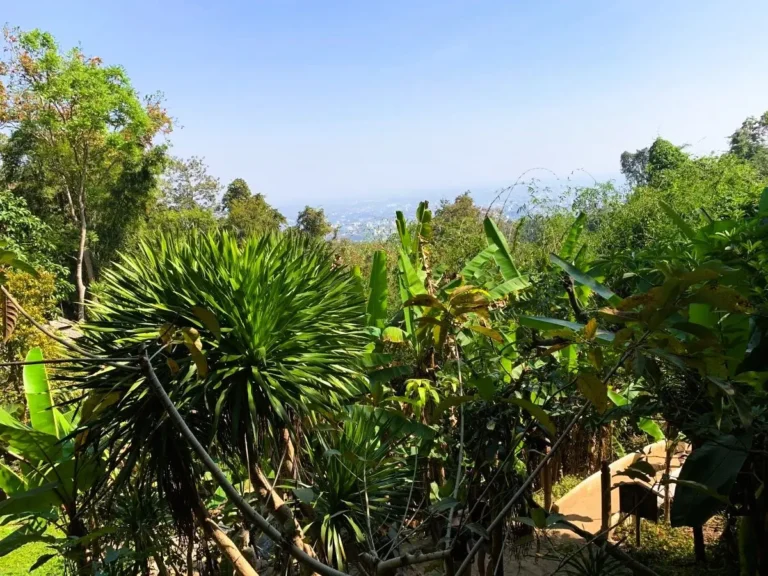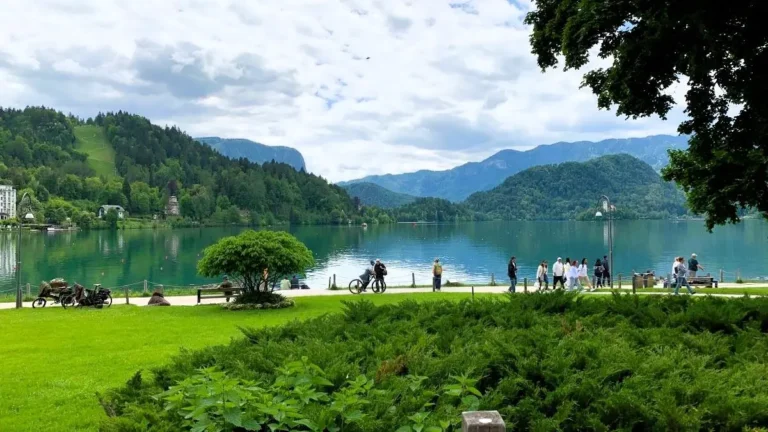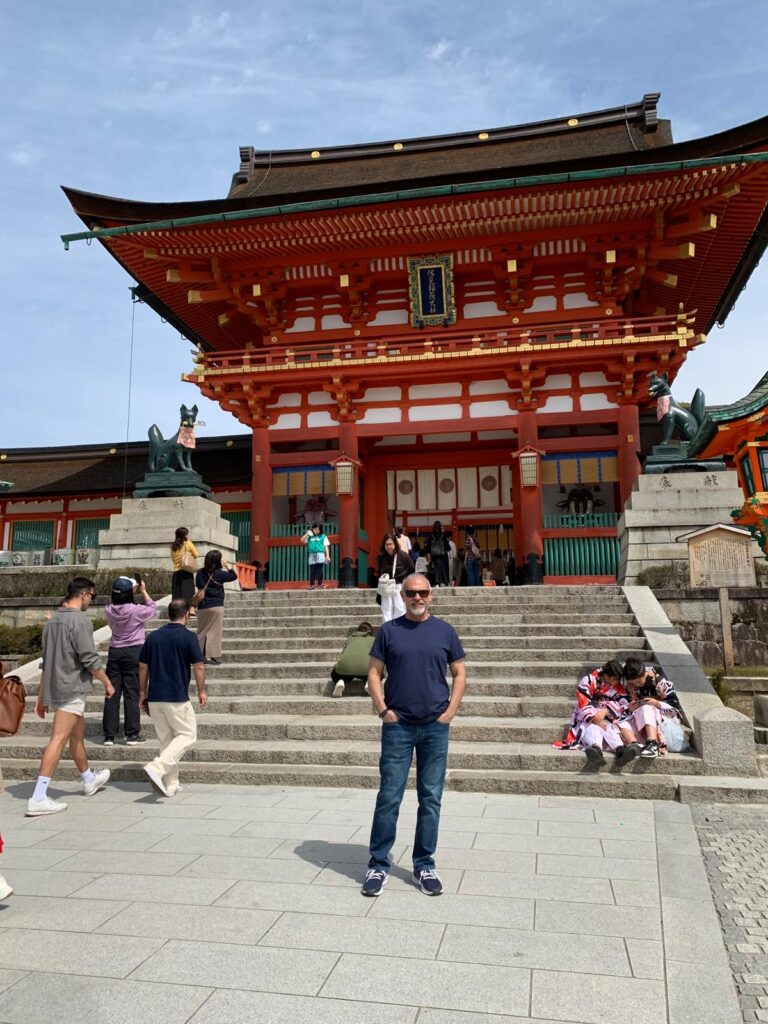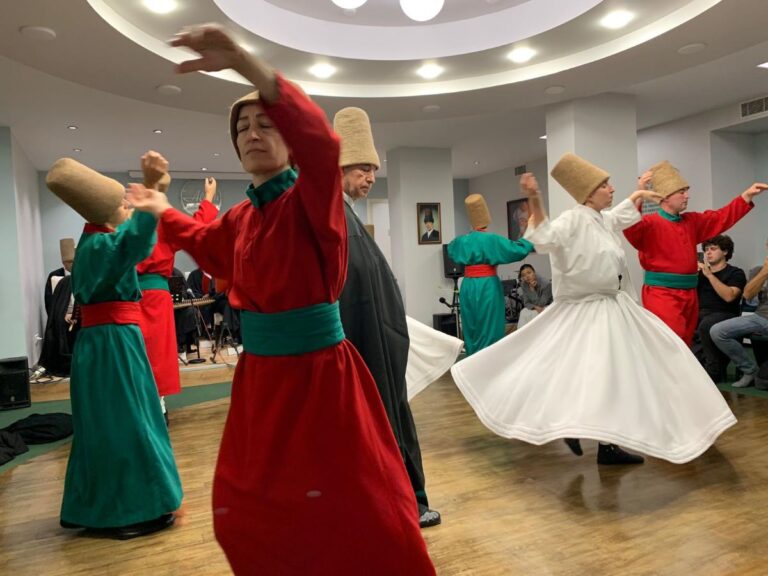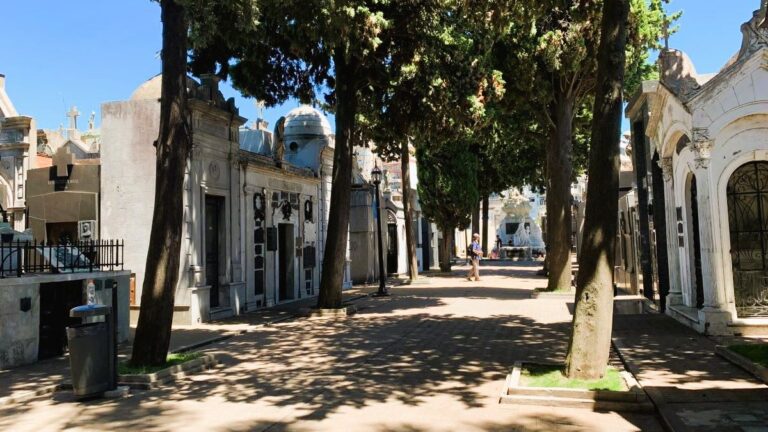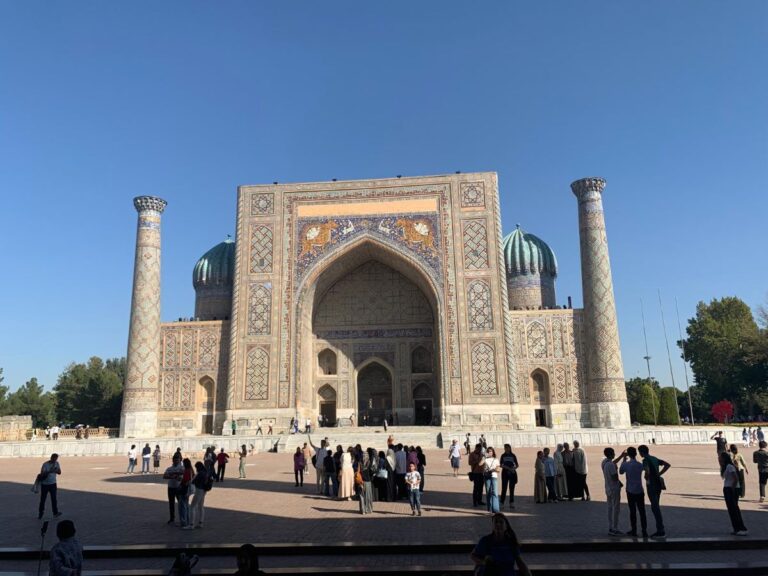Best Tango Shows in Buenos Aires: My Guide for First-Time Visitors
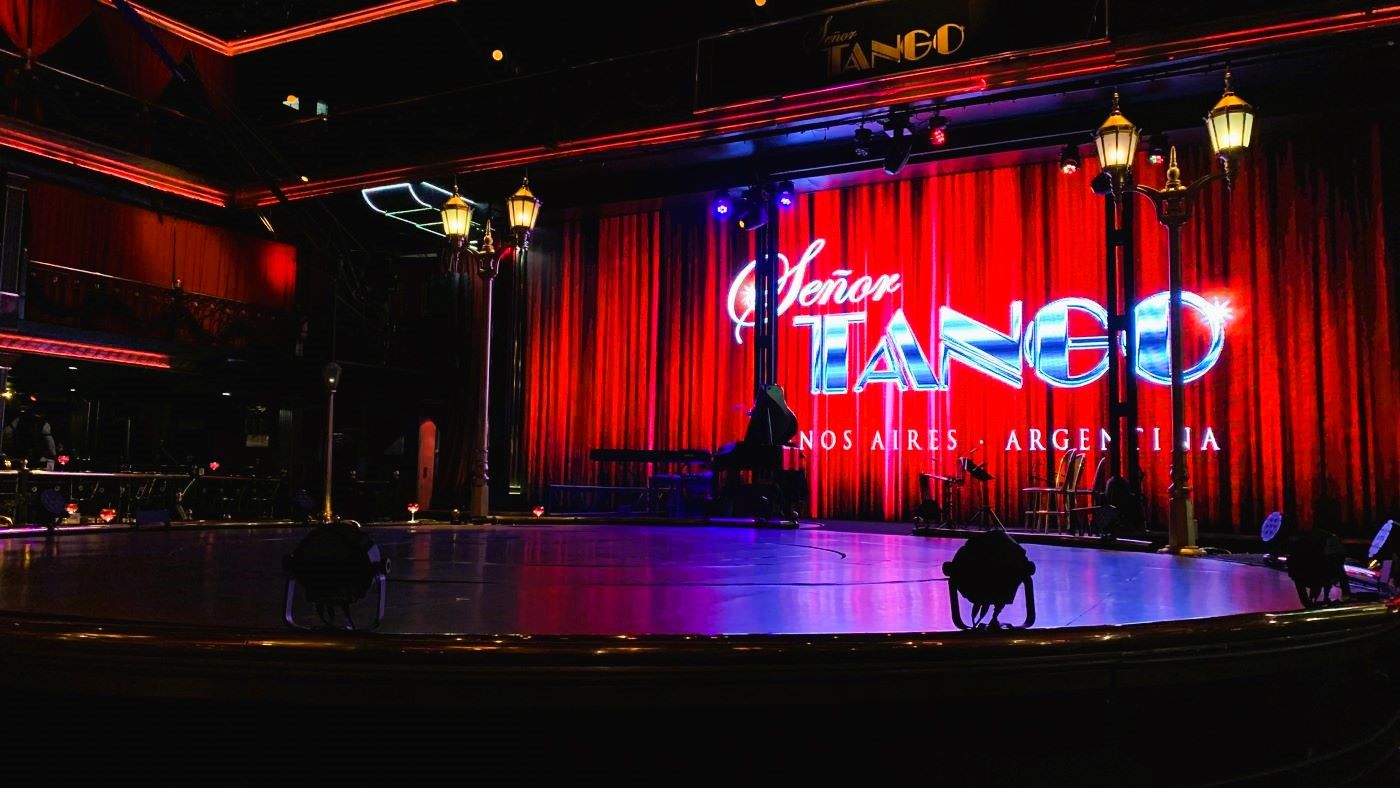
Buenos Aires is the birthplace of tango – raw, passionate, and unforgettable! But if it’s your first time in the city, choosing the right tango show can feel overwhelming.
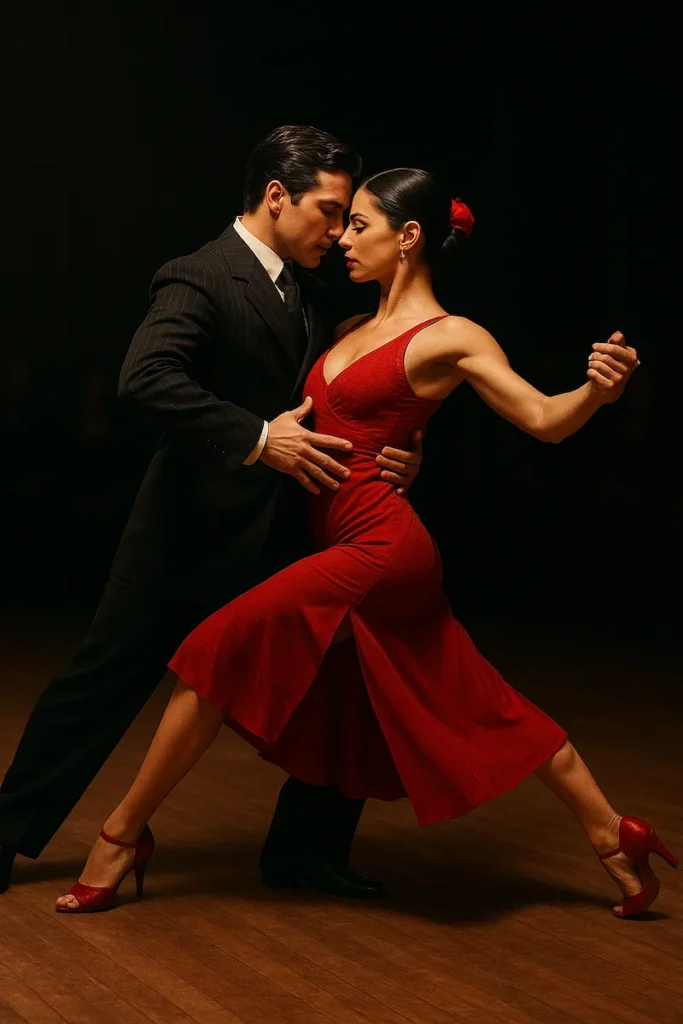
Do you go for the glamorous, cabaret-style performance with a gourmet dinner? Or do you slip into a smaller, historic venue where tango feels more like storytelling than spectacle?
In this guide, I’ll walk you through the best tango shows in Buenos Aires – whether you’re looking for a once-in-a-lifetime luxury experience, an authentic cultural evening, or something more intimate and off the beaten path.
Each option has its own vibe, and by the end, you’ll know exactly which one is right for your trip.
Alongside tango, you’ll find folkloric dance styles enriching the vibrant cultural scene.
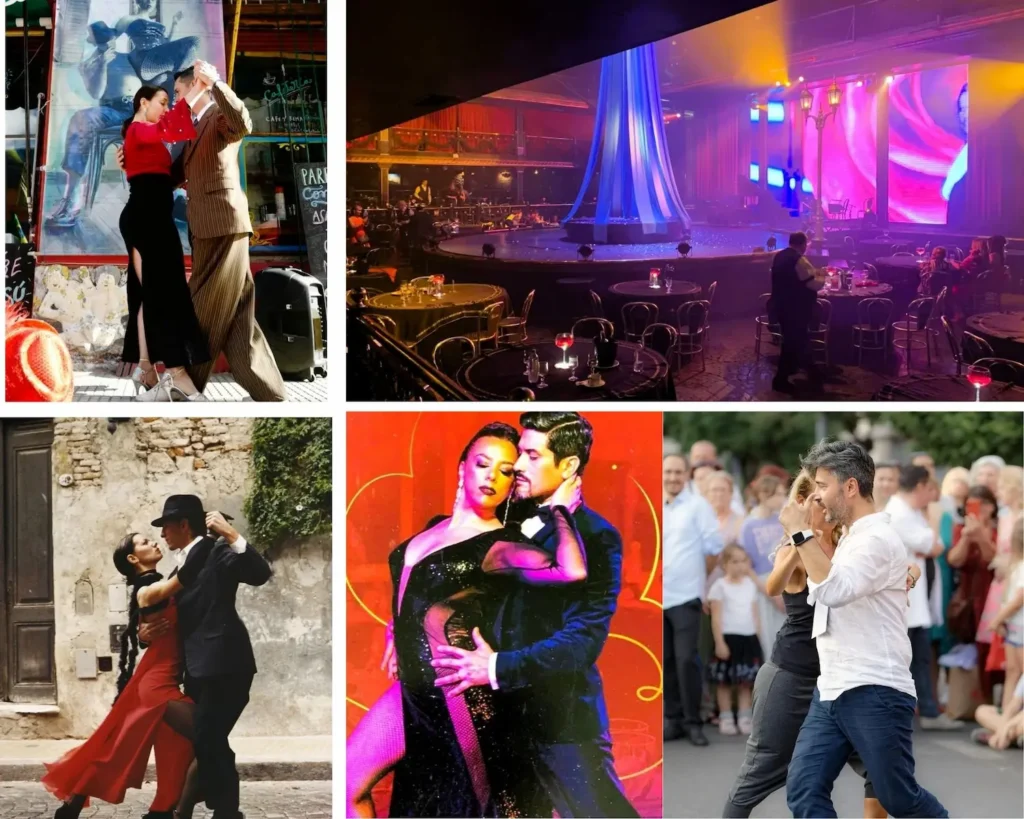
Related Posts:
- The Ultimate Argentina Travel Guide: Essential Tips for Visiting Cities, Landscapes, and Culture
- 20 Best Things to Do in Buenos Aires for First-Time Visitors
- Best Steakhouses in Buenos Aires: A Guide to Argentina’s Legendary Parrillas
- Recoleta Cemetery in Buenos Aires: History, Highlights, and Visitor Tips
A Short History of Tango: Where It All Began
Tango feels as inseparable from Buenos Aires as jazz does from New Orleans.
Before delving into the best tango shows in Buenos Aires, it’s essential to understand how this dynamic dance style evolved from its local origins to become a defining symbol of the city.
The history of tango blends music, migration, and the dreams of everyday people.
Buenos Aires: The Melting Pot for Tango
At the end of the 1800s, Buenos Aires was alive with newcomers. Immigrants arrived from Europe, Africa, and South America, filling neighborhoods like San Telmo, La Boca, and Palermo with diverse influences. These areas were far from glamorous but vibrant and full of life.
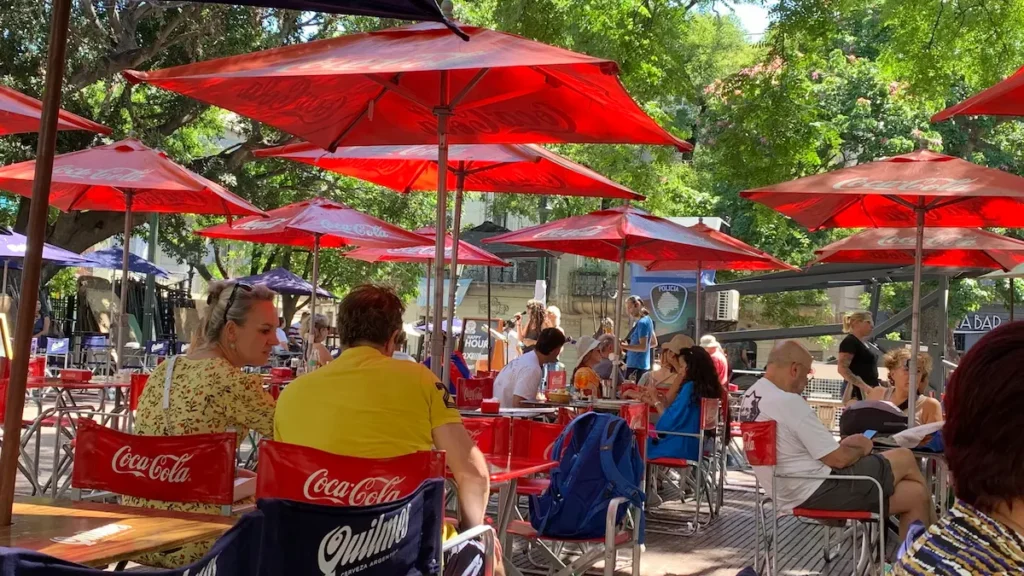
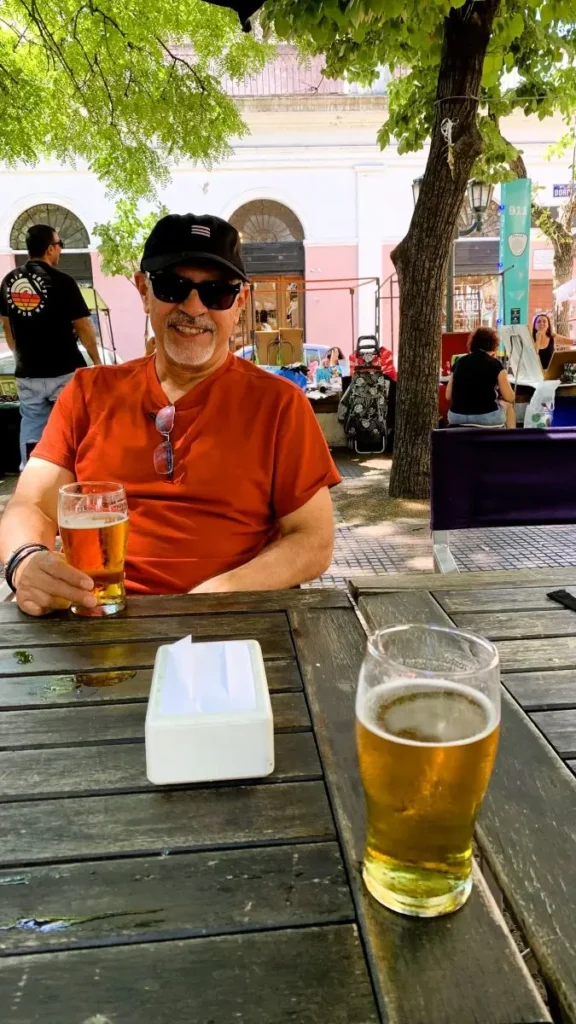
These bustling barrios became fertile ground for creativity, where people blended their music, stories, and dances.
Small bars and street corners became the historic venues where early tango shows unfolded, driven by a desire for connection, storytelling, and escape.
The resulting authentic tango reflects this rich mix, serving as a living memory of the city’s multifaceted past.
Today, this blend remains alive. Wander through historic streets and you’ll hear the bandoneón and guitar, spot colorful murals, and catch spontaneous performances.
Tango brought together musical influences from African, Indigenous, and European traditions.
Picture the bandoneón (a squeezebox much like an accordion) joining with Spanish guitar and African rhythms to create the heartbeat of tango.
The earliest tango songs told stories of longing and love from those times. There were no elegant ballrooms then, just rough wooden floors and packed rooms.
For a deeper look into the unique blend that created tango, check out A Brief History of Tango.
From the Streets to the World Stage
Initially, tango wasn’t embraced by high society. In fact, only the lower classes engaged with it, and it took time before the wealthy locals recognized tango as something to be proud of.
As Buenos Aires expanded, so did the popularity of tango culture. By the early 1900s, this expressive dance and its music began traveling beyond the city.
Musicians and dancers carried tango from intimate early tango shows in Buenos Aires to venues in Paris, London, and across Europe and North America. The world fell in love with the dramatic close embrace that defines tango.
Tango in Buenos Aires is More Than a Dance
A tango show in Buenos Aires – whether polished and grand or raw and spontaneous – is an expression of the city’s soul itself.
The music narrates tales of heartbreak, hope, and reunion. The dance is intimate, sometimes playful, sometimes passionate, and always full of expression.
Tango here isn’t just a tourist attraction. Locals, or “porteños,” continue to gather regularly at milongas, preserving traditions that stretch back over a century.
When you attend the tango shows here, you’re not just seeing a performance; you’re experiencing a living piece of Buenos Aires’ past and present—a reminder that the rhythm of tango has always echoed through this city.
Tango: The Rhythm of Daily Life
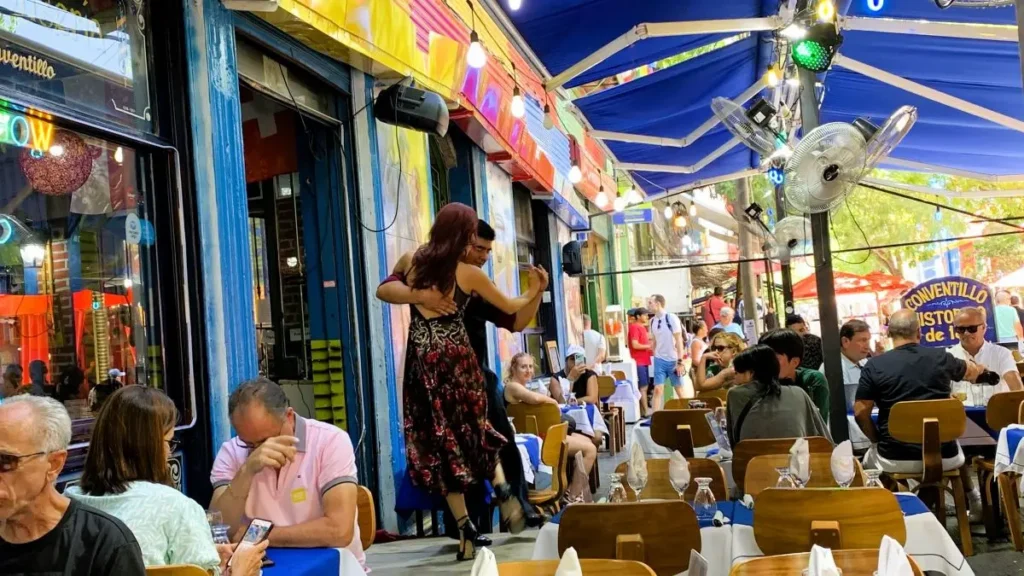
Tango extends beyond theater stages into the daily rhythm of Buenos Aires.
Local milongas—social gatherings featuring tango dancing—play a vital role in preserving this tradition.
These evenings of music, dance, and conversation cultivate a sense of community spirit and connection.
Many participants take tango lessons or classes here, deepening their engagement with the dance’s joys and challenges.
For many, authentic tango offers a sense of identity tied to both history and everyday life.
For a closer look at how tango music shapes Buenos Aires, explore the insights shared by the Secret Tango Society in their piece Exploring Tango Music in Buenos Aires. It beautifully captures how tango culture remains at the heart of the city’s identity.
A Dance Built Into the Foundation of Buenos Aires
Buenos Aires itself seems designed with tango in mind. From the nostalgic antique bars of San Telmo to the refined theaters downtown, every corner feels like a stage.
The city’s architecture—melding European style with local character—mirrors the dance: elegant, dramatic, and welcoming.
Tango is central to major events, from national holidays to personal celebrations.
Festivals, street performances, and competitions keep this heritage vibrant and evolving. Locals take pride in sharing the dance with newcomers and travelers, ensuring the tradition lives on.
Tango as a Symbol of Identity
Ask any porteño, and they’ll tell you that tango belongs to Buenos Aires just as pizza belongs to Naples.
This dance symbolizes local identity, shaped by resilience, hope, and the spirit of renewal. Tango tells the city’s story—sometimes joyful, sometimes melancholic, always vibrant.
If you’re planning to experience the best tango shows Buenos Aires has in store, you’ll carry the passion and cultural depth of authentic tango long after your visit.
For more tips on discovering real Argentine culture and beyond, see my Complete Argentina Travel Guide.
Top 10 Tango Shows in Buenos Aires for Visitors
If you’re seeking an authentic taste of the city, the tango shows in Buenos Aires offer a mesmerizing blend of tradition, passion, and theater.
Whether you prefer an intimate dinner experience, a grand spectacle, or a local vibe, this list highlights the top tango shows across the city.
Each venue brings its own unique style, atmosphere, and audience. Here’s what to expect from the best tango shows Buenos Aires has to offer for first-time visitors.
1. La Ventana
Step into the heart of San Telmo, and you’ll find La Ventana, a show that’s more than just tango—it’s a full celebration of Argentine culture.
From the moment you enter, you’re greeted by the lively sounds of folk music, tango, and gaucho dances, performed with passion and joy. The wooden interiors and intimate stage make every performance feel personal, like the dancers are telling their story just to you.
Dinner is part of the experience, with classic Argentine dishes like empanadas, juicy steaks, and a glass of Malbec to toast the evening. The atmosphere is energetic, warm, and bursting with local pride—perfect for a night where you want music, dance, and culture all in one.
- Location: San Telmo, Buenos Aires
- Best For: Travelers who want an authentic, full cultural experience.
- Dinner Option: Yes—traditional Argentine dishes and wine included.
- Pickup/Drop-off: Most ticket packages include hotel transfers.
2. Rojo Tango
For a night of luxury and romance, head to Rojo Tango at the Faena Hotel in Puerto Madero.
From the moment you walk in, the plush red velvet seats, dim candlelight, and elegant tables make you feel like you’ve stepped into an old-world cabaret. The show itself is slick, sensual, and dramatic, with dancers performing with incredible precision and passion.
Dinner here is top-notch, with gourmet Argentine cuisine, fine wines, and decadent desserts. Whether it’s a special date night or a splurge-worthy experience, Rojo Tango delivers a memorable, high-end evening.
- Location: Faena Hotel, Puerto Madero, Buenos Aires
- Best For: Couples or anyone seeking a glamorous, romantic night out.
- Dinner Option: Yes—gourmet dinner and wine included.
- Pickup/Drop-off: Private hotel transfers usually included.
3. El Viejo Almacén
Walking into El Viejo Almacén in San Telmo is like stepping back in time. This historic venue has been welcoming tango lovers for decades, with wooden interiors, intimate seating, and an orchestra playing just feet away. The dancers perform with elegance and emotion, keeping the tradition alive in every step.
Dinner here features hearty Argentine favorites, served in generous portions. The atmosphere is cozy, welcoming, and full of nostalgia, perfect for those who want a classic, authentic tango experience.
- Location: San Telmo, Buenos Aires
- Best For: History and tradition lovers seeking authentic tango.
- Dinner Option: Yes—classic Argentine meals included.
- Pickup/Drop-off: Hotel transfers typically included.
4. Señor Tango
If you want grand drama and high-energy spectacle, Señor Tango in Barracas is the show for you.
Think Broadway-style production, with aerial tango acts, elaborate choreography, and sometimes even live horses on stage. It’s bold, theatrical, and impossible to forget.
The dinner packages complement the show perfectly, and the whole evening feels like a full celebration of Argentine flair. Perfect for families, groups, or anyone who loves a show-stopping performance.
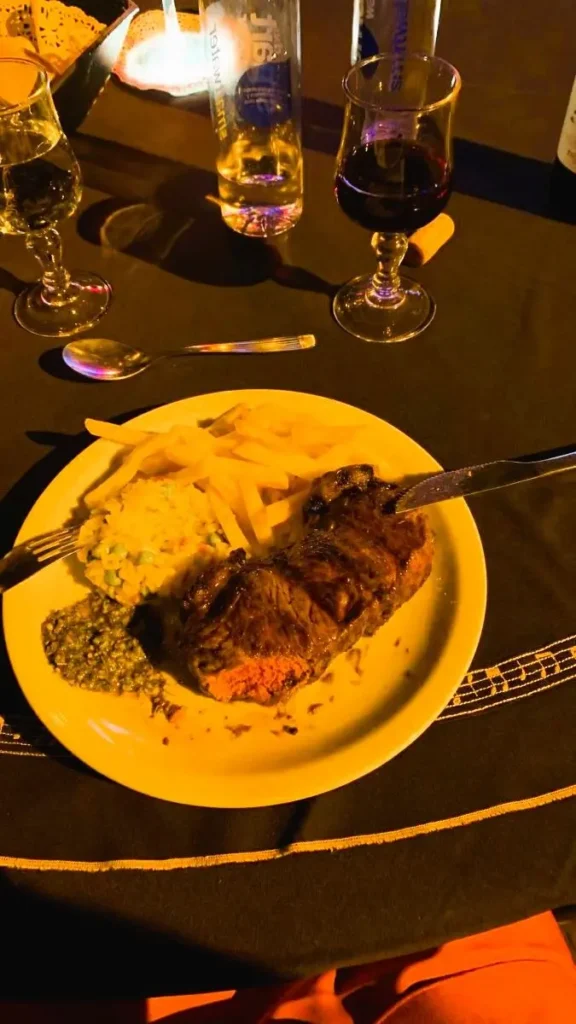

- Location: Barracas, Buenos Aires
- Best For: Big groups, families, or anyone seeking a spectacular, theatrical night.
- Dinner Option: Yes—full dinner packages available.
- Pickup/Drop-off: Most tickets include hotel transfers.
5. Tango Porteño
Located just steps from the Obelisk, Tango Porteño is housed in a stunning 1940s Art Deco theater. The large cast, lively music, and dramatic choreography bring the golden age of tango to life. The show combines elegance, energy, and cinematic flair, making it one of the most complete tango experiences in the city.
Dinner features classic Argentine dishes like steak, empanadas, and Malbec. The social, vibrant atmosphere makes it perfect for couples, friends, or anyone who wants classic tango with a lively twist.
- Location: Near the Obelisk, Buenos Aires
- Best For: First-time visitors seeking a lively, elegant tango show.
- Dinner Option: Yes—classic Argentine fare included.
- Pickup/Drop-off: Hotel transfers generally included.
6. El Querandí
El Querandí is a beautifully restored 1920s bar downtown, offering a cozy and intimate tango experience. The dancers perform with passion and precision, while candlelit tables and a three-course meal create a warm, inviting atmosphere.
It’s the kind of place where you can sit back, relax, and soak in every movement and note, feeling connected to the history of tango. Ideal for couples or small groups who want substance over spectacle.
- Location: Downtown Buenos Aires
- Best For: Intimate evenings and authentic tango lovers.
- Dinner Option: Yes—three-course Argentine meals with wine.
- Pickup/Drop-off: Most ticket packages include hotel transfers.
7. Café de los Angelitos
With over a century of history, Café de los Angelitos in Balvanera is where elegance meets tradition. The refined performances include a full orchestra and some of the city’s top dancers, creating a classy, immersive experience.
VIP seating options give you a front-row view, while dinner-and-show packages let you enjoy delicious Argentine cuisine with wine. It’s perfect for romantic nights, anniversaries, or small group outings.
- Location: Avenida Rivadavia 2100, Balvanera
- Best For: Special occasions and romantic evenings.
- Dinner Option: Yes—dinner and wine included.
- Pickup/Drop-off: Transfers usually offered.
8. Madero Tango
For a modern, stylish twist, check out Madero Tango in Puerto Madero. Floor-to-ceiling glass walls offer stunning views of the waterfront, while the show blends traditional tango with contemporary music and staging.
The atmosphere is welcoming and fresh, perfect for first-timers or seasoned fans. Dinner packages cover most budgets, making it easy to enjoy a full night out without stress.
- Location: Puerto Madero, Buenos Aires
- Best For: Travelers who want modern tango with a chic atmosphere.
- Dinner Option: Yes—dinner packages available.
- Pickup/Drop-off: Most tickets include transfers.
9. Piazzolla Tango
Piazzolla Tango in the Mirador Guemes Gallery is a tribute to the legendary bandoneón composer Astor Piazzolla. This show emphasizes music and emotion over spectacle, with orchestral performances and dramatic, expressive dancing that bring each piece to life.
Seating keeps you close to the action, and the audience often includes locals, giving the evening an authentic, heartfelt vibe.
- Location: Mirador Guemes Gallery, Downtown Buenos Aires
- Best For: Music lovers and travelers interested in modern, artistic tango.
- Dinner Option: Yes—dinner and wine packages available.
- Pickup/Drop-off: Transfers typically included.
10. Aljibe Tango
Aljibe Tango in San Telmo is cozy, colorful, and approachable. Perfect for families or first-time visitors, the show traces the history of tango with charm and energy. Locals and tourists mingle in the audience, and the affordable dinner packages make it easy to enjoy an authentic night out.
The vibe is relaxed and fun, making it an ideal introduction to Buenos Aires’ signature dance.
- Location: San Telmo, Buenos Aires
- Best For: Beginners, families, or anyone looking for a relaxed, welcoming show.
- Dinner Option: Yes—traditional Argentine dishes and wine.
- Pickup/Drop-off: Most ticket packages include transfers.
🎶 Top 10 Tango Shows in Buenos Aires – At a Glance
SHOW |
BEST FOR |
DINNER OPTION |
PICK-UP/DROP-OFF |
💰 PRICE RANGE |
|
La Ventana |
Full Argentine cultural experience – tango + folk music + gaucho dances |
Yes – empanadas, steak, Malbec |
Yes |
$$ |
|
Rojo Tango |
Luxury, romantic, cabaret-style night out |
Yes – gourmet dinner & wine |
Yes (private) |
$$$ |
|
El Viejo Almacén |
Classic, traditional tango with history |
Yes – hearty Argentine food |
Yes |
$$ |
|
Señor Tango |
Big, theatrical, high-energy spectacle |
Yes – full dinner packages |
Yes |
$$–$$$ |
|
Tango Porteño |
Elegant, lively, golden-age tango experience |
Yes – steak, wine, empanadas |
Yes |
$$ |
|
El Querandí |
Intimate, authentic, historic atmosphere |
Yes – 3-course meals with wine |
Yes |
$$ |
|
Café de los Angelitos |
Romantic, elegant, special occasions |
Yes – dinner & wine packages |
Yes |
$$–$$$ |
|
Madero Tango |
Modern, stylish twist with waterfront views |
Yes – flexible dinner options |
Yes |
$$ |
|
Piazzolla Tango |
Music-focused, modern tango, heartfelt performances |
Yes – dinner & wine |
Yes |
$$ |
|
Aljibe Tango |
Relaxed, beginner-friendly, cozy |
Yes – traditional meals & wine |
Yes |
$ |
✨ Ready for an Unforgettable Night of Tango?
Whether you’re looking for a glamorous, romantic evening, a classic tango experience, or a fun, family-friendly show, Buenos Aires has a tango night just for you. From the historic charm of La Ventana and El Viejo Almacén, to the modern waterfront vibe of Madero Tango, there’s something to fit every style and budget.
Pick the show that speaks to you, plan your dinner, and get ready to be swept away by the music, passion, and magic of tango. Book your tickets now and make your Buenos Aires visit truly unforgettable!
Local Favorites: Where Porteños Go for Authentic Tango
If you want to experience the true spirit of Buenos Aires, seek out the places where locals gather. While the best tango shows in Buenos Aires offer polished performances and often cater to visitors, porteños have their own go-to spots for authentic tango.
These venues don’t focus on tourists; instead, the rhythm here is raw, spontaneous, and full of local color.
If you’re eager to see how tango really thrives in the city’s neighborhoods, these are the addresses you’ll want to keep handy.
Milongas: The Best Places for Tango in Buenos Aires
Milongas are the beating heart of Buenos Aires’ social tango scene. They’re not just performances—they’re vibrant dance nights where anyone can jump in.
Locals, from teenagers to grandparents, put on their dancing shoes and hit the floor. The atmosphere is welcoming and informal.
You’re just as likely to see experienced dancers as you are couples who met that very night.
Many milongas also offer tango lessons or classes before the dancing begins, making them perfect for newcomers.
A few cherished milongas stand out if you want an authentic Buenos Aires tango experience. Check them out:
- La Catedral Club: This quirky venue in Almagro is full of bohemian charm. With exposed brick walls, mismatched furniture, and vegetarian fare, it sets a relaxed scene. The dancing ranges from classic tango to alternative rhythms, attracting a young and laid-back crowd—a favorite for locals unwinding after work.
- Salón Canning: Famous for its pristine floors and smooth moves, Salón Canning is a legendary spot. You’ll find some of Buenos Aires’ best dancers here, but everyone is welcome to participate or simply watch. On weekends, the lively atmosphere grows, bringing together serious tangueros and curious friends alike.
- El Beso: Known for its intimate dance floor and central location, El Beso is a venue many porteños hold dear. The warm energy and regular crowd offer a genuine glimpse of how tango keeps the city connected.
- Esquina Homero Manzi: This historic milonga is a cornerstone of tango culture. With a classic setting and passionate dancers, it’s an essential stop for those seeking authentic tango in Buenos Aires.
Neighborhood “Barrios” Known for Tango
Certain Buenos Aires neighborhoods seem made for tango. San Telmo and Almagro, in particular, boast hole-in-the-wall bars where tango is never far away.
Impromptu tango sessions can spark at any moment—one minute there’s chatter, the next the bandoneón leads the way.
- Bar Los Laureles (Barracas): Nearly 120 years old, this bar-turned-cultural space fills quickly on tango nights. The parquet floor echoes with footsteps, and the crowd is primarily local. If you want an old-school vibe along with hearty Argentine fare, this is the place to visit.
- Club Atlético Fernández Fierro: Run by the renowned Orquesta Típica Fernández Fierro, this venue pushes tango’s boundaries. Its gritty, surreal energy showcases live music and dance in an unfiltered way, attracting more locals than tourists and offering a side of Buenos Aires few see.
Tips for Experiencing Tango Like a Local
If you want to fit in at a local milonga or bar, keep these tips in mind:
- Dress a bit sharper than usual (but stay comfortable—you might get invited to dance).
- Arrive late; most locals head out after 10 pm, and the real tango starts closer to midnight.
- If you’re new, observe for a while—the social “codes” for inviting someone to dance can be subtle.
- Don’t feel pressured to dance; watching with a glass of Malbec is perfectly acceptable.
These local haunts remind me that the best tango shows in Buenos Aires often unfold far from big stages—wherever the music begins and nobody can stay still.
Where to Watch Tango for Free in Buenos Aires
You don’t need a big budget or a dinner reservation to experience the vibrant energy of tango in Buenos Aires. The city itself serves as a lively stage where gifted dancers emerge unexpectedly—right on the street or in public squares—transforming everyday sidewalks into spontaneous dance floors.
If you’re a traveler who loves discovering authentic moments, here are some of the best places for tango, featuring free tango shows that capture the heart of Buenos Aires’ tango culture.
Street Performances in San Telmo
San Telmo stands out as one of the best places for tango, especially on Sundays during the famous Feria de San Telmo (San Telmo market), when the neighborhood buzzes with energy.
This historic barrio with its cobblestone streets attracts antique vendors, food stalls, and live musicians.
By early afternoon, San Telmo’s Plaza Dorrego and nearby Defensa Street come alive with tango dancers, captivating crowds with flowing, graceful movements.
Watching these free tango shows in San Telmo is a perfect way to dive into the city’s creative pulse—you simply stop, enjoy, and if you feel inspired, toss a few pesos to support the performers.
- Best time: Sunday afternoons throughout the market hours, typically from 1 to 6 pm
- What to expect: Live music accompanying couples dancing, and occasionally solo performers blending traditional tango with street flair
San Telmo’s streets truly showcase Buenos Aires’ vibrant tango culture, offering free tango shows that are both accessible and unforgettable.
Open-Air Dancing in La Boca
La Boca is famous not only for its bright murals but also as an open space to experience tango up close.
Caminito, the neighborhood’s pedestrian-friendly avenue, hosts spontaneous tango shows daily, especially on weekends, with dancers using small wooden platforms as their stage.
The atmosphere is informal and inviting, perfect if you want to mingle in and possibly join the dance.
This casual setting offers some of the city’s best free tango shows where local couples dressed in classic attire perform to lively accordion and guitar music.
- Best time: Weekends and sunny afternoons
- What to expect: Dynamic couples performing, a flowing crowd, and an easy-going ambiance
Enjoy browsing local art stalls or sipping coffee at an outdoor café while taking in the scene—a truly flexible way to experience tango in Buenos Aires’ public spaces.
Public Squares and Community Events
Beyond San Telmo and La Boca, Buenos Aires’ public squares occasionally host special free tango performances.
Places like Plaza Francia in Recoleta and the historic Plaza de Mayo sometimes welcome local tango groups for community events and cultural festivals.
Although these pop-up milongas are less frequent, discovering one is a unique chance to enjoy the city’s tango culture in a communal setting.
- Best time: Monitor local event calendars or look for posters at bus stops and subway stations
- What to expect: A welcoming mix of ages, community spirit, and sometimes even a full orchestra
Tips for Enjoying Free Tango in Buenos Aires
While no ticket is needed to enjoy these free tango shows, a few simple tips will enhance your experience:
- Carry small bills to tip dancers and musicians who rely on crowd generosity
- Stay vigilant with your belongings in busy areas
- Feel free to take photos, but always respect dancers’ focus during the performance
- Arrive early to secure a good viewing spot on busy weekends
Attending free tango performances is one of the best ways to feel Buenos Aires come alive through its rich tango culture—no velvet curtains or reservations required.
If you want to combine sightseeing with your tango adventures, explore my list of the best things to do in Buenos Aires for a well-rounded and memorable visit.
Conclusion
Every first-time visitor to Buenos Aires should feel the pulse of tango—whether it’s on a grand stage or in the open air of a city plaza. The variety of tango shows in Buenos Aires captures the city’s soul, from smoky milongas to unforgettable cabaret performances.
Whether you book a dinner show, wander through San Telmo for street performances, or end up in a lively neighborhood bar, you’re sure to come away with lasting memories and a new love for the culture of Buenos Aires.
Give yourself the chance to join in, or simply soak it all up. If you’ve caught a great show, found a favorite spot, or have questions about planning your Buenos Aires stay, drop your stories or tips in the comments—I’d love to hear from you.
Thanks for reading and sharing your travel spirit. I hope your nights out are filled with music, new friends, and a little tango magic.
Recent Posts:
-
The Best Florence 3-Day Itinerary For First Timers (Landmarks, Views, And Food)
Planning a trip to Florence? Awesome! You’re in for a treat! Florence packs centuries of art, culture, and history into streets that are super easy to wander on foot. This Florence 3 day itinerary is built for first-time visitors who want the big sights, plus time to eat well, shop a little, and wander without…
-
Your Ultimate 3-Day Itinerary in Rome (First-Time Visit Guide)
Arriving in Rome, the Eternal City, for the first time feels like stepping into a living history book. I’m not kidding. Everywhere you turn you find ancient ruins, renaissance churches, and fountains, sometimes sharing the same charming streets. The city buzzes with energy, from the scooters zipping by to the lively piazzas filled with people…
-
The Ultimate Italy Travel Guide for First‑Time Visitors (Simple, Honest Tips)
Italy is one of those places that lives in your head long before you land. Ancient ruins, quiet churches, busy piazzas, long dinners, and trains that carry you from city to city like scenes in a film. When friends ask me where they should go on their first big trip to Europe, Italy is usually…
-
Travel Chiang Mai, Thailand: A Calm Base for Temples, Markets, and Food
Your Ultimate Travel Chiang Mai Thailand Guide Chiang Mai sits in a green valley in northern Thailand, ringed by low mountains and crowned by temples that have been there for centuries. Key Takeaways: This Travel Guide to Chiang Mai, Thailand also shares a simple 3-day plan you can follow without stress. The Old City, with…
-
Lake Bled Day Trip: The Perfect First-Time Adventure from Ljubljana
Welcome! If you’re spending time in Ljubljana and want to experience Slovenia’s most magical landscapes, a Lake Bled day trip from Ljubljana is an easy choice. With its glacial blue water, Lake Bled Island at its center, and Bled Castle perched high on the cliffs, this spot looks straight out of a fairytale—no need for…
-
Best Things to Do in Ljubljana, Slovenia (First-Time Visitor’s Guide)
Welcome! Thank you for visiting my blog about the best things to do in Ljubljana! In this guide I’ll share my own favorite spots and handy tips, best places to eat and some local insights you might not find elsewhere. Ljubljana, the charming capital of Slovenia, is stunning! The architecture is breathtaking! I promise you,…

